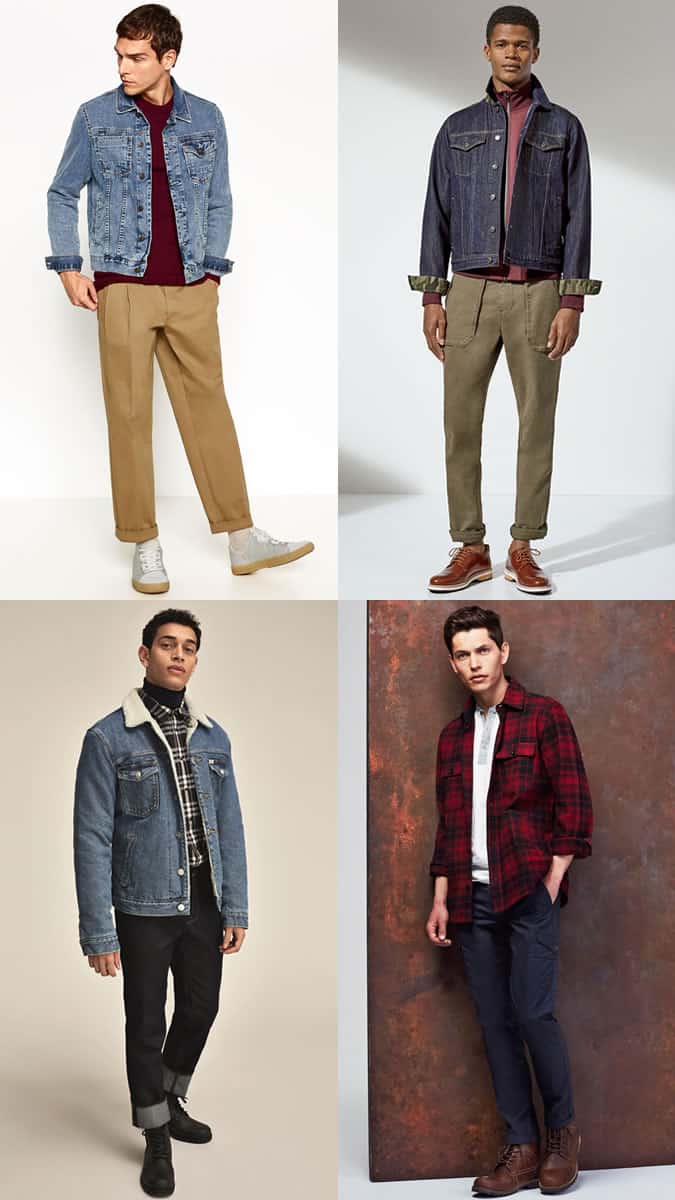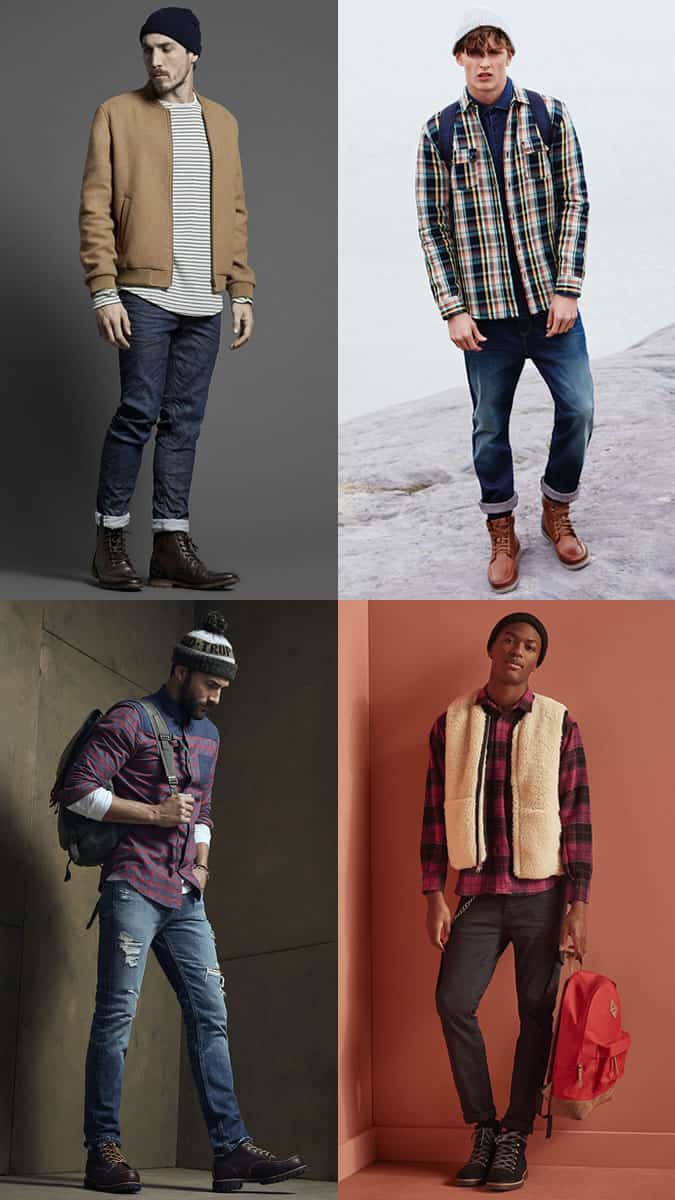In menswear, the clothes that truly seem to endure are the ones that offer the person wearing them some kind of function. They are literally fit for purpose. That’s the reason so many so many military pieces make the transition from the front line to the runway, and it’s also the case with workwear.
Items originally designed for carpenters, dockhands, fishermen and labourers are wearable in the truest sense of the word. They’re comfortable, layered – perfect for autumn. And, in more ways than one, they’re made to last.
“The appeal of workwear is that it doesn’t date,” says Chris Gove, founder and creative director of British menswear brand Percival. “It was never designed for a particular era or movement, so the purpose and appeal of workwear remains relevant, transcending trends.”
Functional workwear items like Red Wing boots, Dickies trousers and Barbour jackets have been fashion statements since the late 1990s, sold first through independent menswear stores like American Classics in London and Manchester’s Oi Polloi. These days, workwear is as ubiquitous on the high street and in department stores, with many fast-fashion brands even offering capsule collections of blue-collar staples like chore jackets and selvedge denim jeans.
Carhartt’s Work in Progress line offers a more fashionable take on the look, and is a firm favourite of fashion industry insiders. “I think it’s even more relevant right now due to the nostalgia that workwear holds towards simpler times, where people had a craft and the pace of living was slower,” says Gove.
Workwear offers desk-bound men a whiff of the romance of semi-skilled labour without, you know, actually having to get your hands dirty. Indeed, much of the workwear canon, especially the Americana of labels like Dickies and Carhartt, romanticises the kind of work which is being made redundant by automation or outsourcing to developing countries.
It’s no surprise that workwear’s surface textures are predominantly matte: heavy cotton drill, thick wool, deep indigo denim, butter-soft flannel, chambray, slub linen and waxed cotton.
These are fabrics which neither glow or shine, or draw any attention to themselves, but are instead quietly handsome, taking on character with use and wear over time. Gloss and ‘newness’ is for the shiny world of the internet and luxury emporiums, which is what the appropriation of workwear is partly a reaction against.
The New Rules Of Workwear
Relax When It Comes To Fit
The appeal of workwear is that it is functional, so even if you’re just running for the bus or riding your bike (as opposed to making a log cabin), it quite simply works. Key to this is a loose and easy fit. Robust workwear trousers such as a pair of carpenter’s pants or raw denim jeans should ideally be worn in a more relaxed cut.
“Just make sure what you’re wearing is fit for purpose,” says Enzo Cilenti, a designer for British workwear brand Carrier. “For instance, fisherman trousers are cut extra wide so that they can be rolled up easily for getting in and out of the water. Make sure it’s practical.”

Mix It Up
Unless, of course, you really are a dockhand or lumberjack, it’s best to avoid doing the whole look from head to toe. “Pair workwear with cleaner, tailored pieces to avoid looking like a pastiche,” says Gove. “I like the contradiction of styling a lived-in piece of vintage workwear with something sharp and polished to feel modern.”
For instance, a washed denim or blue chambray shirt looks brilliant when paired with a tailored jacket or blazer. Equally, flipping the balance on its head, the right kind of jeans can provide a solid foundation for a more suited looked up top.

Toughen Your Accessories Up
A good way to channel workwear’s ruggedly masculine aesthetic is with a bit of clever accessorising. Fisherman beanies may be almost insufferably hipster, but they’ll keep you warm, while a solid pair of work boots keep your feet dry.
Commuters of all kinds should also look to outdoor brands for day-to-day bags that are built to withstand bad weather and even worse public transport while keeping personal belongings safe.

Use Colour (Carefully)
Workwear tends to lean towards neutral shades such as navy, khaki, sand, green and brown. All of these can work worn tonally as part of a more streamlined look, but when it comes to workwear’s thicker, boxier cuts, it pays to lighten up.
“Pops of colour help break up the workwear palette,” says Gove. Knitwear in a bright colour, like a red fisherman jumper, with a blue chore jacket and deep indigo jeans, will help to break up the outfit, making you look distinctive and different – but not too different. Workwear does its best work with a sense of cool understatement.

Loading...








Comments
Post a Comment